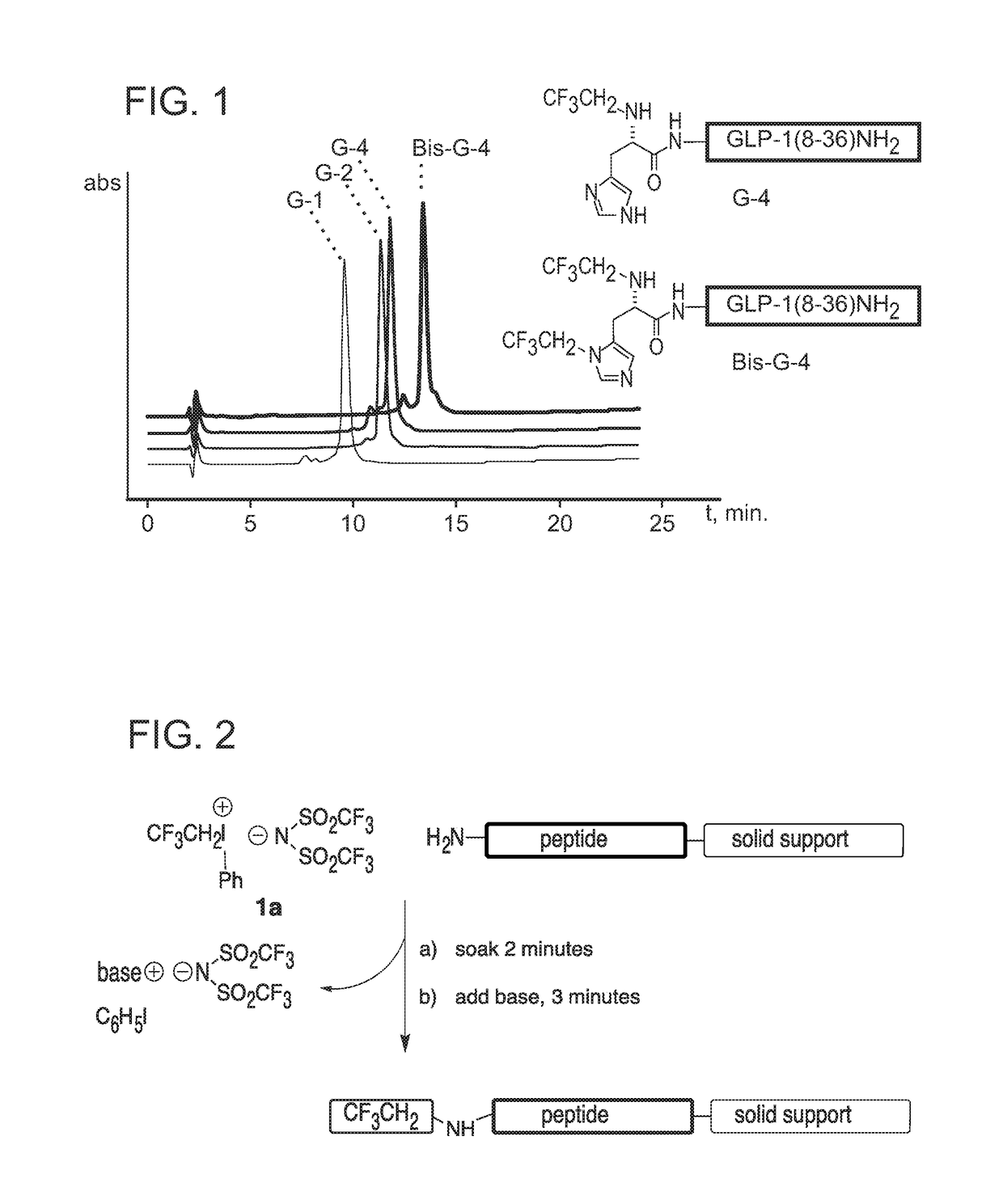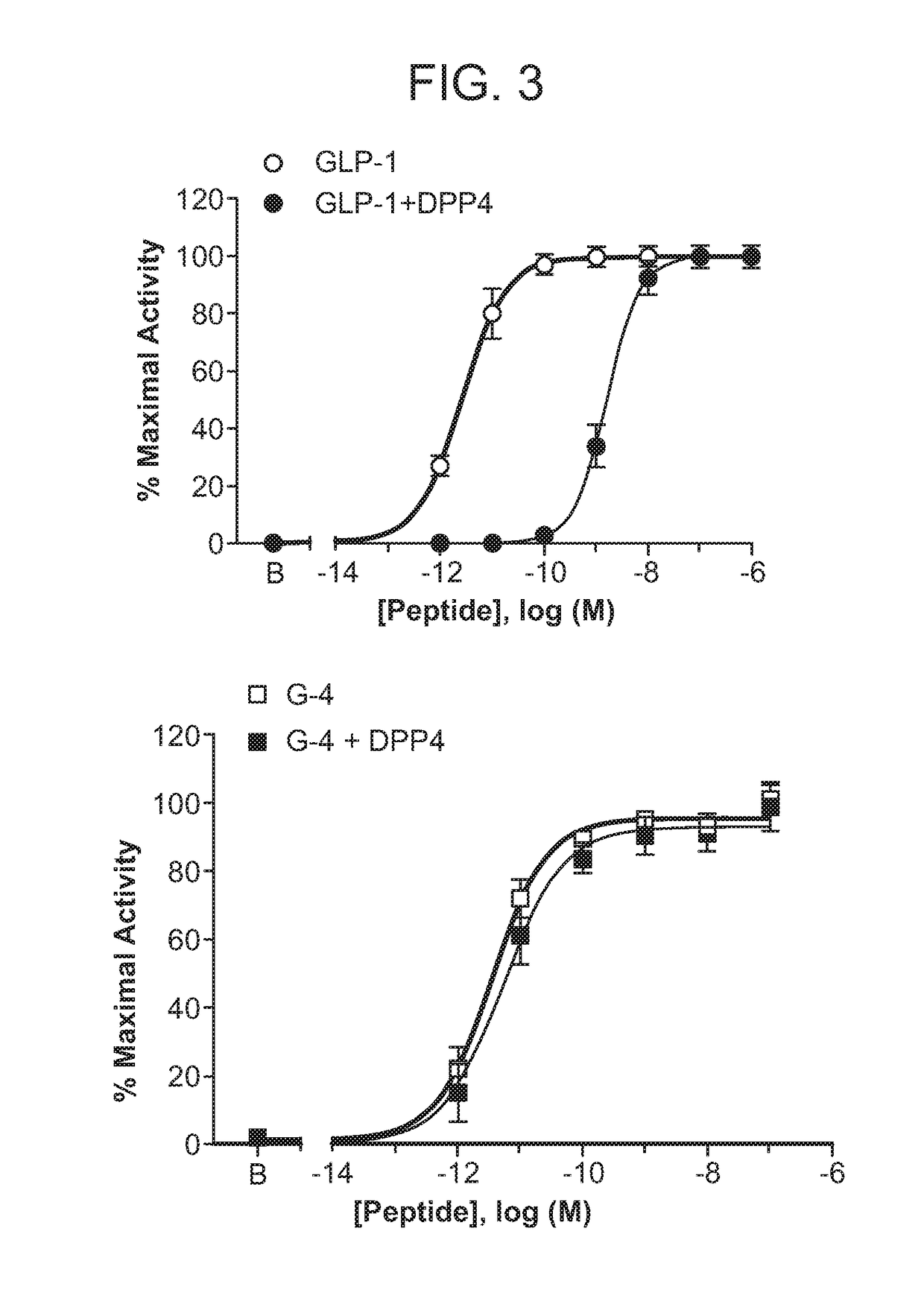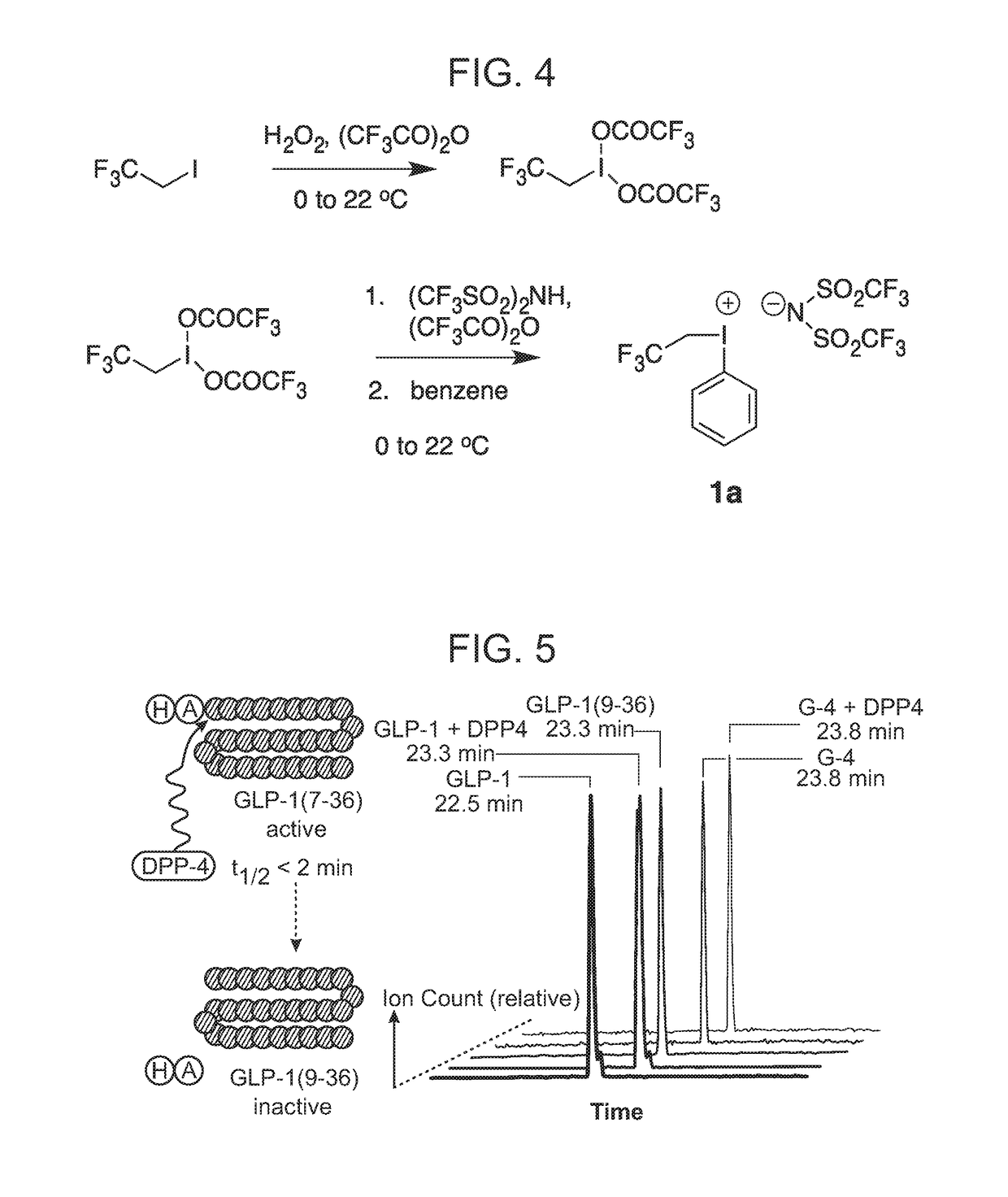Novel polypeptides with improved proteolytic stability, and methods of preparing and using same
- Summary
- Abstract
- Description
- Claims
- Application Information
AI Technical Summary
Benefits of technology
Problems solved by technology
Method used
Image
Examples
example 1
Glucagon Like Peptide 1 (GLP-1)
[0231]As demonstrated herein, the invention provides a method of ameliorating, preventing or minimizing the proteolysis instability problem that is ubiquitous to peptides. Such methods comprises the preparation of novel polypeptides that are chemically modified.
[0232]In certain embodiments, the modification comprises covalently attaching at least one 2,2,2-trifluoroethyl group to the N-terminal amino group, other free amino group, thiol group and / or thioether group in a polypeptide. Such modification may be achieved using various synthetic groups. In a non-limiting example, this chemical derivatization may be performed using a rapid and efficient fluoroalkylation reaction, which is demonstrated with two analogues of Glucagon Like Peptide 1 (GLP-1).
[0233]GLP-1 synthesized by solid phase peptide synthesis was derivatized while resin-bound to yield the desired trifluoroethyl analogue, with equivalent ease and speed as the predictable and well-practiced ac...
example 2
ty to DPP4
[0240]Compounds were incubated overnight at 37° C. in the presence of recombinant DPP4 or vehicle (TRIS buffer, pH 8.0). The samples were then assessed in GLP1R agonist assays as described elsewhere herein. As DPP4 induced N-terminal cleavage of peptides result in virtually complete loss of function, the decrease in intact peptide was reflected in a corresponding potency loss (DPP4 vs. vehicle treated; e.g., 10-fold potency loss indicates 90% degradation). Non-limiting examples are illustrated in FIG. 3. Complementary assessment can be made by ESI LC-MS to detect potential minor degrees of DPP4 mediated hydrolysis that may be difficult to detect by comparison of potency in functional assays.
TABLE 2Agonist potency and sensitivity to DPP4-mediated hydrolysis.Poly-N-TerminusEC50DPP4 peptideamino modificationsReceptor(pM)cleavageGLP-1−GLP-1R2.2+++GLP-1R99.1 −GLP-1R1.3−GLP-1R6.4−GLP-1R3.7−GLP-1R4.1−GLP-1R1.0−GLP-1R3.9−GLP-1R4.4−GLP-1R1.0n.d.GLP-1R2.7n.d.GLP-1R2.6−GLP-1R123 n....
example 3
stant Analogues
[0245]Resistant analogs are shown at FIGS. 6-10, 12,13, 14, 18, 19 and 21. DPP4-insensitive analogues of liraglutide, a palmitoylated form of GLP-1, are generated by derivatizing the His7 residue. Palmitoylation promotes peptide multimerization and enhances reversible serum albumin binding as mechanisms to partially protect liraglutide. The potential synergistic effects of His7 N-alkylation and lipidation in liraglutide are investigated. His7 modifications in a GLP-1 analogue with an alternative lipidation (compound “A6”), which may also enhance albumin binding, are also explored.
[0246]In certain embodiments, the presently contemplated modifications of the terminal His7 in GLP-1 and analogues selectively abolish cleavage by DPP4 without compromising agonist activity. In other embodiments, the presently contemplated modifications of the terminal His7 in GLP-1 and analogues essentially maintain the native non-helical N-terminal conformation of GLP-1 and interactions wit...
PUM
| Property | Measurement | Unit |
|---|---|---|
| Fraction | aaaaa | aaaaa |
| Fraction | aaaaa | aaaaa |
| Molar density | aaaaa | aaaaa |
Abstract
Description
Claims
Application Information
 Login to View More
Login to View More - R&D
- Intellectual Property
- Life Sciences
- Materials
- Tech Scout
- Unparalleled Data Quality
- Higher Quality Content
- 60% Fewer Hallucinations
Browse by: Latest US Patents, China's latest patents, Technical Efficacy Thesaurus, Application Domain, Technology Topic, Popular Technical Reports.
© 2025 PatSnap. All rights reserved.Legal|Privacy policy|Modern Slavery Act Transparency Statement|Sitemap|About US| Contact US: help@patsnap.com



